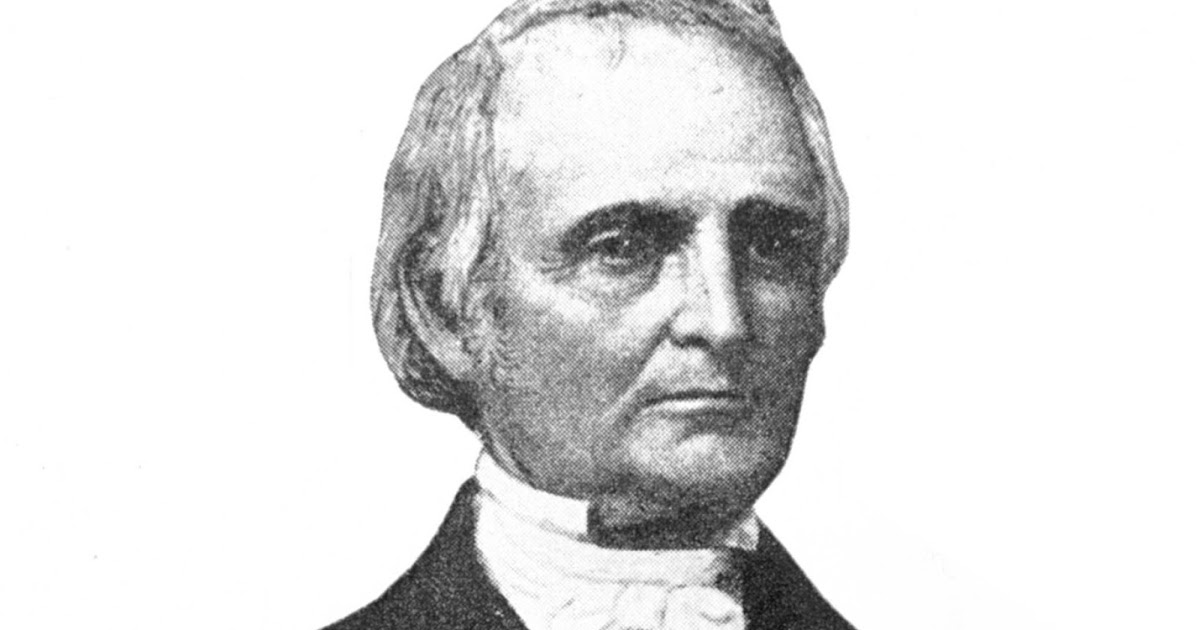One hundred and ninety-nine years ago today, a local paper out of Ripley, Ohio, published the final installment of a series of letters written by the Reverend John Rankin. They were addressed to his brother, Thomas, on the subject of American slavery.
“This day’s paper contains the last of a series of letters, on slavery, published in [The Castigator],” wrote editor David Ammen. “Such are the ways of the world that we have been censured by some, and applauded by others, for publishing them.”
Rankin didn’t know it then, but in writing those letters he was laying the foundation for the anti-slavery movement. And while the mention of the abolition movement today will conjure images of Frederick Douglass and William Lloyd Garrison, these American heroes were, directly or indirectly, influenced by Rankin and his work. Far from a household name, Rankin is overlooked in most history books, but his influence on abolition cannot be overstated. His life and legacy deserve to be remembered.
In his day, Rankin’s letters caused a local sensation up and down the Ohio River valley. Starting in August of 1824, The Castigator published a new letter every week—each one rebuking popular defenses of slavery. At the time, Ohio and Kentucky were still very much considered part of the nation’s western frontier. Most of the people who lived in Ripley had never heard such a comprehensive explanation of the anti-slavery position. Adding to this sensation was the drama associated with the letters. Thomas, a Virginian merchant, had recently purchased slaves. John, distraught over this development, hoped to convince his brother of the error of his ways.
He and his siblings had all been raised to believe that slavery was not just wrong but sinful—an offense to God himself. Rankin determined that his brother must have fooled himself into believing one of the many prevalent lies that existed about the nature of slaves and slavery. His letters aggressively confronted these commonly accepted fallacies. Rankin picked apart concepts such as the natural inferiority of black people and the humane living conditions of slaves. He most forcefully rejected the idea that the Bible permits slavery. Rather he argued that Scripture was “one grand scheme of benevolence.”
“Beams of love and mercy emanate from every page, while the voice of justice denounces the oppressor, and speaks his awful doom,” he wrote.
After the final letter was published, Rankin decided to capitalize on their popularity. He moved to have them bound and printed as a book. Six hundred copies were circulated throughout the region. Initially, “the series of letters was well received in [Ohio],” Rankin wrote. Even across the river in Maysville, Kentucky, he had them sold with little difficulty.
This warm reception was short-lived, however. “Since that time,” he wrote, “it would have endangered a man’s life to sell one of them in that state, so wonderfully do men grow worse.” An additional 400 copies were produced, but an arsonist set fire to the warehouse that housed them.
Being “too poor to reprint another edition,” Rankin supposed his letters “would never appear again.” It was an unfortunate development, but he didn’t dwell on it too much. To Rankin’s satisfaction, his primary objective in writing these letters had been achieved. His brother, Thomas, made a trip to Ohio to free his slaves and thereafter divorced himself from slavery entirely.
A few years later, Rankin received a note from a Quaker in New Jersey who had gotten his hands on the letters and wished to print a second edition. With the sole determination to see “the destruction of American slavery,” Rankin accepted the offer. Rankin’s Letters on American Slavery enjoyed a surge of popularity among the New England abolitionists once they were reprinted. Most notably, they had a significant influence on a young William Lloyd Garrison.
At this time, Garrison was morally opposed to slavery but still supported colonization—the idea that the best solution to slavery would be to end it gradually and ship the former slaves to Africa or the West Indies. Rankin’s Letters challenged this plan, arguing that if a slave has a right to freedom, he has a right to it now, not gradually. Garrison was consumed by these arguments, adopting fully the concept of immediate emancipation and committing himself to a multiracial society.
Rankin and Garrison would get to know each other very well through the growth of the anti-slavery movement. As time went on, they wouldn’t always see eye to eye, but Garrison’s respect and admiration for Rankin was never in question. He considered himself a “disciple” of John Rankin’s teachings. Later, Garrison frequently referred to Rankin as his “anti-slavery father.” Shortly after adopting Rankin’s understanding of immediate emancipation, Garrison launched The Liberator, which became among the most notable anti-slavery papers in the country. Like The Castigator, Garrison’s paper ran Rankin’s letters weekly in 1832. As the American Anti-Slavery Society became established at the end of 1833, the society used Rankin’s letters as a sort of textbook, leaning on them for lectures and for instructing new members.
Moreover, Rankin’s Letters on American Slavery couldn’t have come at a more crucial time. Following the Missouri Compromise in 1820, any hope that slavery could be quarantined to the South had been lost. Rankin’s letters gave new energy and purpose to the demoralized abolitionists.
John Rankin’s work to legitimize the anti-slavery cause extended beyond his letters to his brother. He worked closely with Garrison to build an organized anti-slavery movement throughout the 1830s. This growth of influence would invoke the rage of the slaveholders in Kentucky and slavery sympathizers in Ohio. Mobs often formed whenever he would give speeches, pelting him with eggs and rocks. Eventually, it got to the point that he would keep his horse on the other end of the town he was lecturing in so a mob wouldn’t remove its mane or tail bob it.
Rankin refused to be intimidated by his enemies, however. He felt called by God to see to it that slavery would meet its end. No threats or acts of violence would keep him from carrying out that calling. This steady, immobile conviction gave inspiration to the abolitionists of the 19th century. As the movement started to splinter in the latter half of the 1830s, Rankin was a unifying figure, holding the different factions of the anti-slavery movement together.
Due to this influence, it was common for John Rankin to be referred to as the “Father of Abolitionism,” especially in the western states. His letters gave the abolitionists an intellectual foundation to build a movement on. In this regard, their role was not that dissimilar to the one The Federalist Papers played in the adoption of the Constitution. That Rankin hasn’t occupied a more prominent place in our national story is surprising. This is at least partly due to his own humility. Rankin’s purpose wasn’t to gain fame or notoriety as a leader of the anti-slavery movement. It was simply, like he told the Quaker from New Jersey, to see slavery destroyed. Despite his obscurity, his various contributions to the growth of the abolitionist movement should place him in the pantheon of liberty’s greatest heroes. Perhaps now is the best time to consider him as such.

